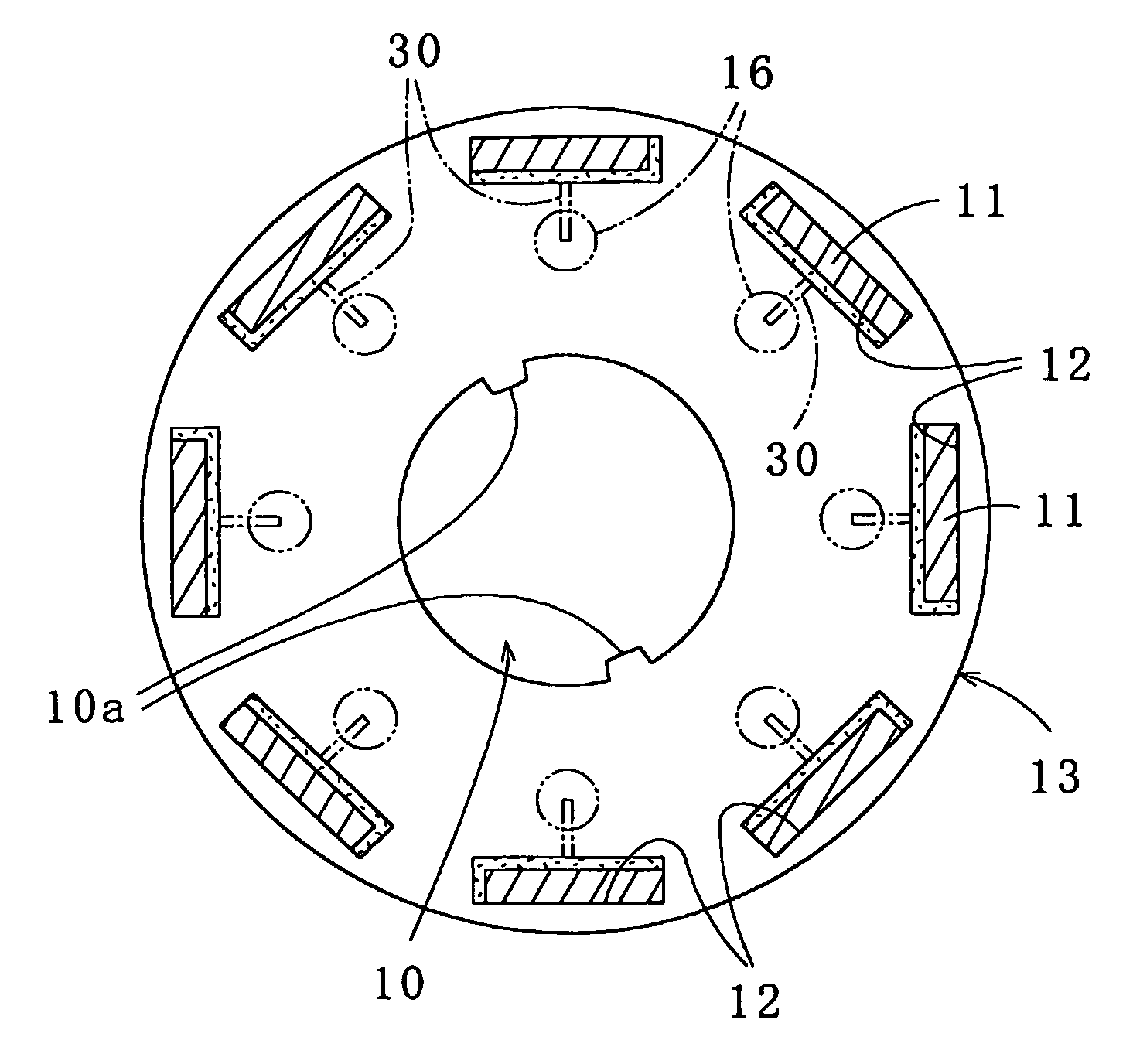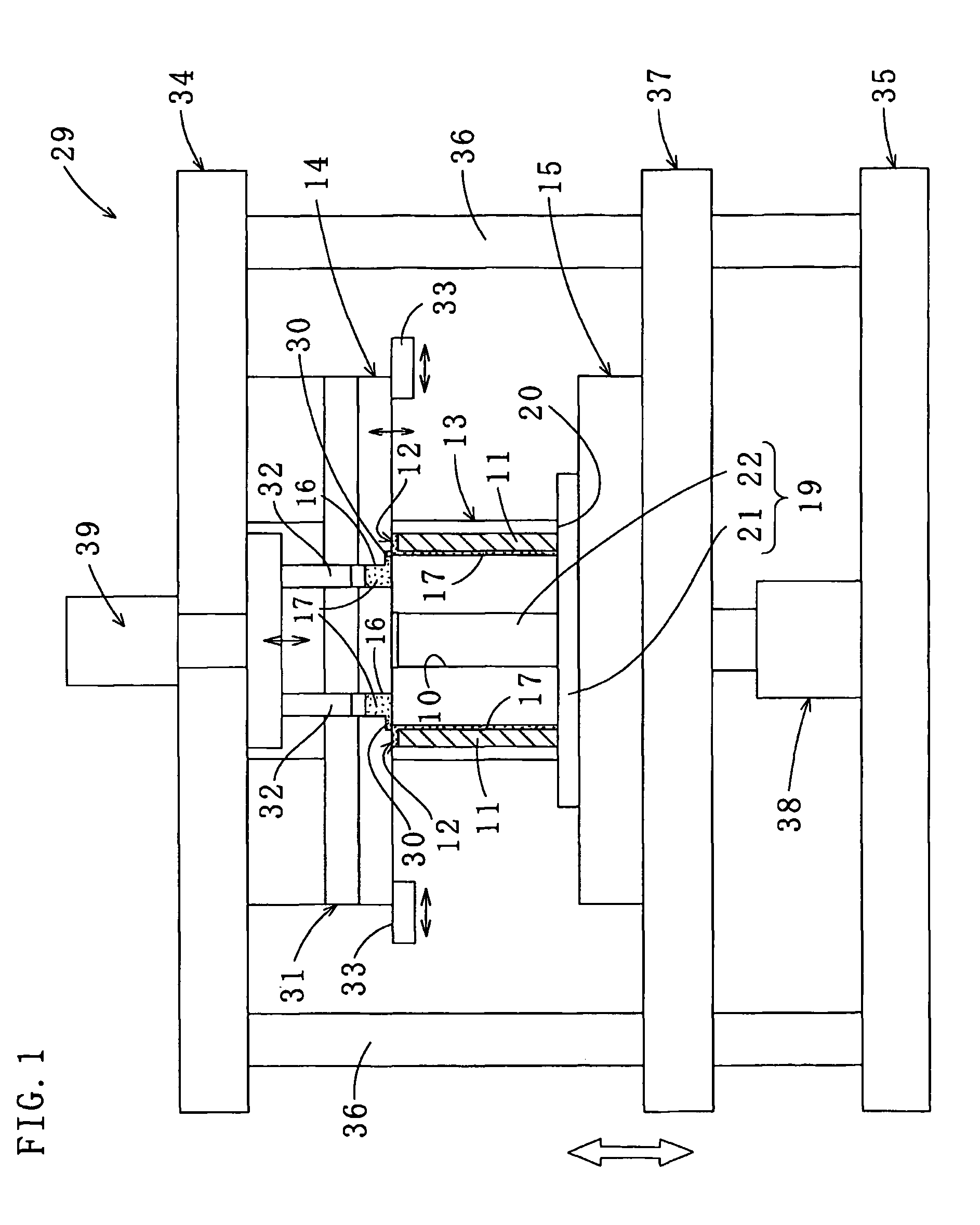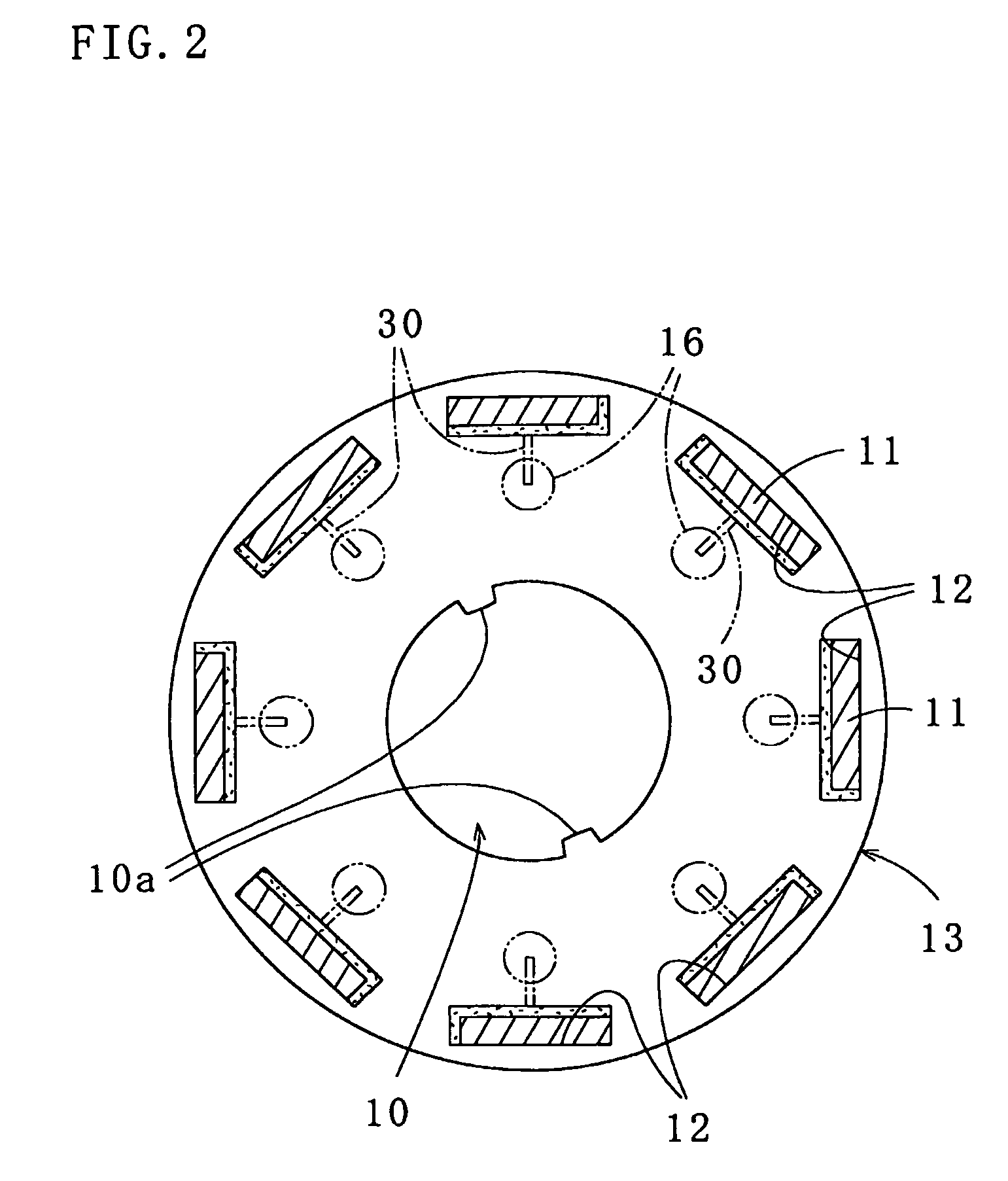Method of resin sealing permanent magnets in laminated rotor core
a technology of laminated rotor core and permanent magnet, which is applied in the field of resin sealing permanent magnets in laminated rotor core, can solve the problems of reducing the fluidity reducing the temperature of the resin material, and the method having difficulty in filling the resin material into the magnet insertion holes, etc., to achieve the effect of improving product quality, improving the efficiency of filling operation of the resin material into the laminated rotor core, and simplifying the apparatus
- Summary
- Abstract
- Description
- Claims
- Application Information
AI Technical Summary
Benefits of technology
Problems solved by technology
Method used
Image
Examples
Embodiment Construction
[0022]Referring now to the accompanying drawings, embodiments of the present invention will be described for a more complete understanding of the invention.
[0023]As illustrated in FIGS. 1 through 4, a method of resin sealing permanent magnets in a laminated rotor core according to a first embodiment of the present invention includes a step of preheating a laminated rotor core (also referred to as a rotor) 13 in the vicinity of a prescribed temperature before resin sealing permanent magnets 11 respectively in a plurality of magnet insertion holes 12 formed on a circumferential part of the laminated rotor core 13, thereby improving efficiency of a subsequent resin sealing operation. The resin sealing of the permanent magnets 11 is effected as follows. The laminated rotor core 13 having the permanent magnets 11 in the respective magnet insertion holes 12 is clamped with the upper and lower dies 14 and 15 of a resin sealing apparatus 29, and resin material 17 is filled into the magnet i...
PUM
| Property | Measurement | Unit |
|---|---|---|
| melting temperature | aaaaa | aaaaa |
| temperature | aaaaa | aaaaa |
| melting temperature | aaaaa | aaaaa |
Abstract
Description
Claims
Application Information
 Login to View More
Login to View More - R&D
- Intellectual Property
- Life Sciences
- Materials
- Tech Scout
- Unparalleled Data Quality
- Higher Quality Content
- 60% Fewer Hallucinations
Browse by: Latest US Patents, China's latest patents, Technical Efficacy Thesaurus, Application Domain, Technology Topic, Popular Technical Reports.
© 2025 PatSnap. All rights reserved.Legal|Privacy policy|Modern Slavery Act Transparency Statement|Sitemap|About US| Contact US: help@patsnap.com



